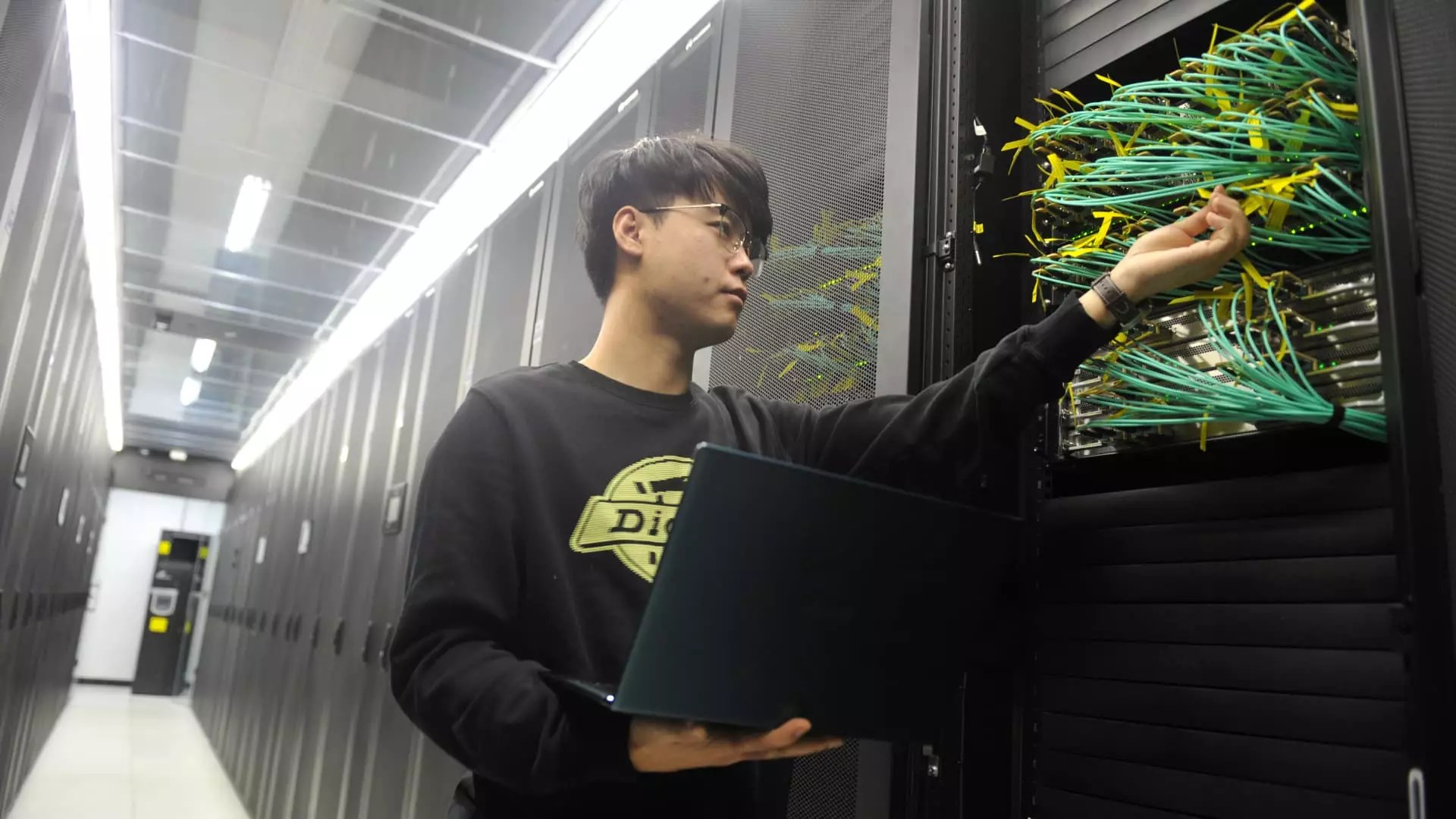As the U.S.-China trade war intensifies, it’s certainly not all doom and gloom for Chinese businesses. In fact, while adversities arise, Chinese companies are scrambling to harness the transformative power of generative artificial intelligence (AI). This push towards technological innovation is not merely a survival tactic but is also perceived as a critical component in fostering economic growth despite the looming uncertainty rife in international trade relations. However, one must wonder—at what cost and consequence do we pursue such technological advancements?
Boris Van, an analyst from Bernstein, observes that the demand for AI solutions remains robust. “DeepSeek’s cost improvements are key drivers for application developments that corporations deem vital for growth and competitiveness,” he asserts. What often feels like a race to the top might instead be a precarious tightrope walk between innovation and nationalistic economic policies, where AI becomes a tool not just for growth, but also a substitution for other economic sectors adversely affected by tariffs.
Government Backing Fuels Competition
Central to this AI revolution is the Chinese government’s push to cultivate an indigenous generative AI ecosystem. The state’s role is crucial and undeniably involved; it is encouraging local technological empowerment aimed at lessening reliance on Western intellectual resources. This approach echoes earlier periods in the trade conflict when regional tech firms were bolstered by local policies intended to mitigate tariff blows.
Take the case of Kingsoft Office’s WPS—it hit a staggering 19.68 million monthly active users in China, reflecting an impressive organic adoption of locally developed AI tools. Furthermore, the introduction of platforms compatible with Huawei’s HarmonyOS marks a significant pivot away from Android, hinting not only at technological ambition but also at the fervor with which China aims to assert its own technological identity. Is this resilience commendable, or does it reveal a deeper concern for the repercussions of a fully self-reliant tech landscape?
The Bright Side: Economic Predictions
Predictions in the realm of AI investment hold promise; The Economist Intelligence Unit anticipates that Chinese spending on AI could skyrocket by 25% annually, potentially contributing a notable 0.13% to the nominal GDP. This positive outlook could bolster corporate earnings for the likes of Kingsoft and Kingdee, who have declared ambitious pivots to artificial intelligence-driven models this year. In contrast, the Goldman Sachs and Citi forecasts suggest a contraction in the overall Chinese economy due to the harsh realities of trade tensions.
Such disparities are telling; they hint at an economy bifurcated by the innovative opportunities afforded by AI and the destabilizing effects of tariff-induced uncertainties. The case for AI’s potential to sustain growth is sound, but can we ignore the pressures and retaliatory measures that might accompany it on the global stage?
Domestic Demand vs. International Repercussions
In the face of such competitive pressures, domestic demand for AI solutions in sectors like internet data centers and cloud computing remains robust. Notably, companies like China Mobile and GDS have displayed resilience, projecting growth despite the turbulence of escalating tariffs. This insight brings forth a critical discussion—are efforts to bolster local technology derailing the globalized technological ecosystem that benefits everyone?
With projected utilization rates for data centers skyrocketing and revenue expectations surging, one must critique how these developments serve as both a boon and a barrier. For one, fostering such intense domestic focus may lead to intellectual isolationism, which contradicts a world where collaboration drives growth. This brings us to the uncomfortable realization that while generations of technological advances could be made, we risk placing ourselves within self-imposed silos that strategize around autonomy and sovereignty.
Potential Threats to Innovation
In pursuing AI advancement vigorously, China runs the risk of prioritizing heavy state involvement over organic innovation. The government’s list of favored industries might lead to an unpredictable landscape where competitive dynamics become distorted. Key players like Kingsoft and Kingdee could dominate, potentially stifling smaller firms and suppressing genuine innovation that often comes from healthy competition.
Moreover, should this focus on generating domestic technology lead to a monopolistic approach, the ultimate beneficiaries could end up being the very enterprises that had initially sprung from innovative beginnings. The exciting prospect of a symbiotic relationship between trade and technology may be overshadowed by an inherent conflict that breeds inefficiencies and inefficacies.
China is currently at the crossroads of redefining its technological destiny. Riding on the booming wave of AI presents opportunities and uncertainties alike. While there’s enthusiasm over possibilities, it is essential to critique the underlying mechanisms at play and their broader implications on both domestic and international terrains—because, in the fascinating yet fraught landscape of global technology, there are always more than just two sides to every story.


Leave a Reply